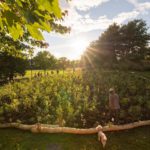
An abridged version of the article appeared in the July/August 2024 BCF Newsletter. Group Plants Front-Yard Forest in Cambridge By Susan Filene, Tori Antonino, Judy Perlman, and Ali Kruger The first Miyawaki forest in the northeast was planted on public land in Cambridge in September 2021. (Miyawaki Forest Boosts Biodiversity, Resilience, BCF Newsletter, May 2022). Similar little forests have been planted or are planned for nearby communities, including Somerville, Brookline, Watertown, Natick, and Worcester. It occurred to me that people could do something similar, on a smaller scale, in their urban/suburban yards. We could replace lawns with native species of [READ MORE]






